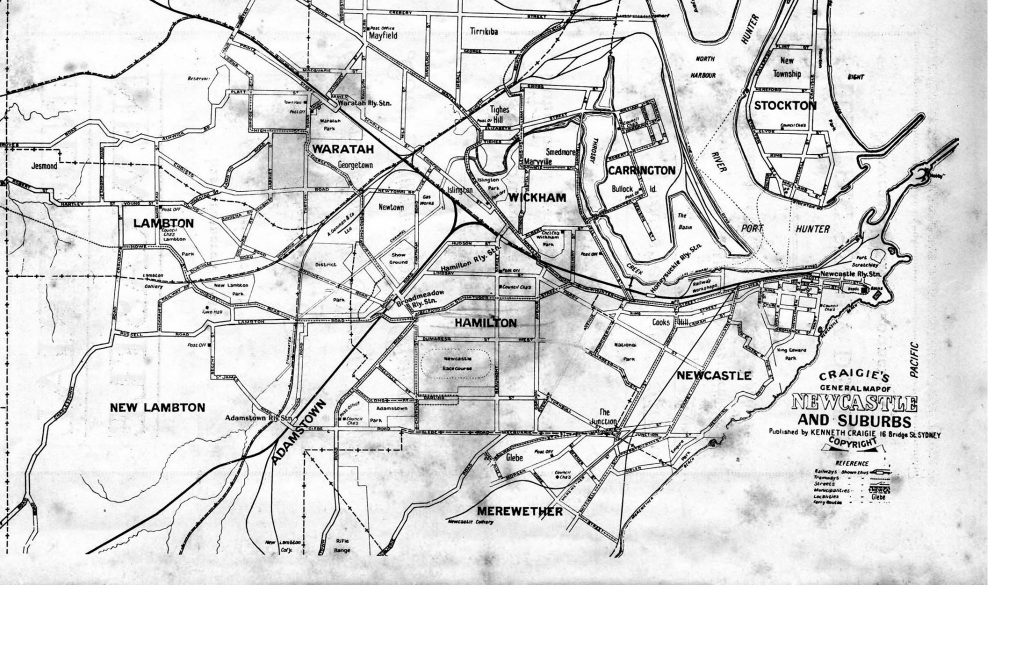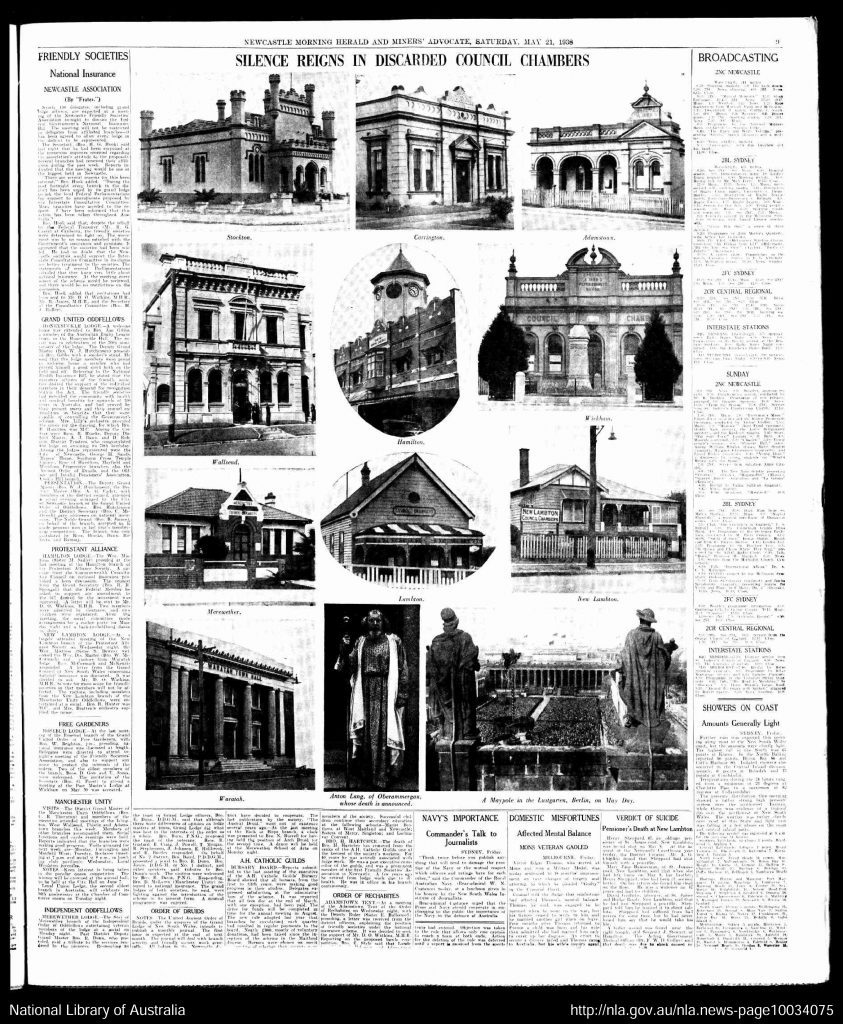The area covered by present day Newcastle Council was once served by 12 different local councils. Plattsburg and Wallsend merged in 1915, and then all the remaining councils then merged together in March 1938 to form the City of Greater Newcastle council.
These pages attempt to document the various town halls and council chambers used by the various suburban councils. Many of these buildings remain today, and others have been lost to fire and demolition. My aim is to have “then” and “now” photos for each of the municipal buildings, wherever possible.
(Note that these pages are a work in progress – there’s still lots of gaps to be filled in, and questions to be answered.)
| Council | Aldermen | Date Incorporated |
| Newcastle | 7 June 1859 | |
| Waratah | 23 February 1871 | |
| Wickham | 27 February 1871 | |
| Lambton | Aldermen (1871-1938) | 24 June 1871 |
| Hamilton | 11 December 1871 | |
| Wallsend | 27 February 1874 | |
| Plattsburg | 27 December 1876 | |
| Merewether | 20 August 1885 | |
| Adamstown | Aldermen (1886-1938) | 31 December 1885 |
| Carrington | 30 March 1887 | |
| New Lambton | Aldermen (1889-1938) | 9 January 1889 |
| Stockton | 14 October 1889 |
The Craigie’s General Map of Newcastle and Suburbs from 1928 below, shows the location of nine of the suburban municipal council chambers.
Two months after the creation of the City of Greater Newcastle Council, the Newcastle Morning Herald on 21 May 1938 published a page of photos showing the now unused suburban council chambers.
Questions yet to be answered
- Why was there such a discrepancy between the grandeur of Stockton’s building of 1891, and the bare simplicity of Merewether’s building in 1894?



I’d guess because Stockton was the more established suburb at the time?
If you have X amount of funds and another party has Y amount of funds then this could be a deciding factor as to the design of a building.
If you have an ego that needs to be stroked then you might want to enhance your persona with eye catching “bling” in the form of detailed architecture.
If you just want to do the job you were elected to do and your staff need only the basic office requirements then why build a large fancy building.
The short answer is personal choice of the elected councils, and possibly the ratepayers.